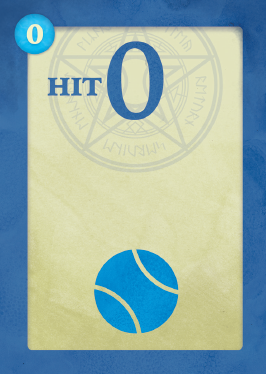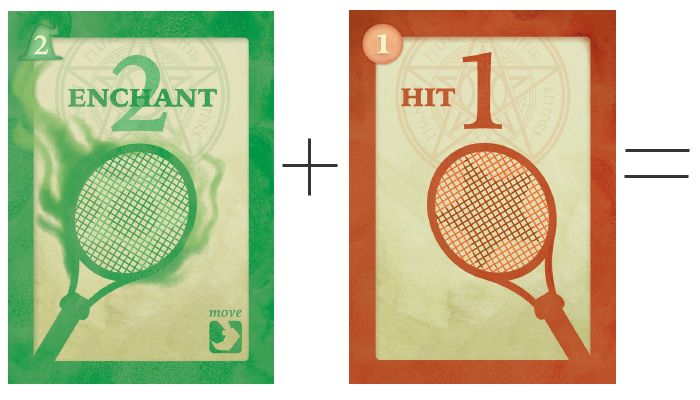Officiating wizard battles are a tough thing.
What are the ground rules? Does anything go, or are there limitations? Imaging trying to be the judge for that sort of thing:
“Transmogrification, teleportation, and elemental manipulation , that’s ok, but no ethereal companions or mind control, and anything temporal is right out…”
Then you have to deal with the type of magicians themselves. Are wands and staves involved? What about hand gestures evocations, rituals? Or is it purely mental willpower? Plus there’s the Morgan Le Fay / Gandalf issue – are only humans allowed to compete? Oh, the possible the PR headache from that one.
See? Sure, it sounds cool to pit Merlin against Harry Dresden and Ged against Voldemort, but it’s just not practical. No, the wizarding world needed a more civilized way to test one’s mettle than giant fireballs and dancing swords. One that doesn’t involve giant broomsticks.
Welcome to the courts of Alakaslam: Tennis in the Wizarding Realm
30-All And An Ace On The Court
Alakaslam is a magic-infused micro card game for two or four players. In it, players take aim at one another over a tennis court, looking to secure the win in a best-of-five series.
Much like normal tennis, Alakaslam is played out on a court, which is set up in either a 3×4 grid in the case of two players, or a 4×4 grid for four. In both setups, the objective remains the same: put the ball onto a space where your opponent can’t reach it.

Prototype Shown
Unlike some of the more nuanced parts of regular human tennis – and its strange scoring system – Alakaslam has a very straightforward set of rules. At the beginning of each match players draws up to eight cards. Cards in the game consist of only three types: Red and Blue Hit cards, and Green Enchant cards. Each of these cards also have number values from 0-3.
Turns in Alakaslam are incredibly simple, consisting of moving, (hopefully) hitting the ball, and drawing. When a player moves, they may move one free space orthogonally within their court before or after hitting the ball. (The server may only move afterwards, however.) For every space you wish to move beyond that, you can discard an Enchant card. The more Enchant cards discarded, the further you. Think of it as defying physics.
Hey, these are wizards after all.
Then, the player hits the ball by using 1-3 cards from their hand. These cards determine the ball’s trajectory. The court has a Red boundary side and a Blue boundary side, and each colored Hit card used moves the ball one space towards its respective side of the court. The distance the ball travels vertically is determined by adding up the number value of the cards. Red and/or Blue cards can be used here, but strategy comes in when you also also use an Enchant card as part of its volley. Rather than adding distance or direction to the ball, the Enchant’s number instead dictates that the other player must use exactly that number of cards in order to hit the ball back.
Like one would expect, in order to score, the ball needs to make it over the net and stay in bounds. What’s more, when serving, the ball must land in a different column than the one served from.

This ball moves one space towards the Red side and one forward. It’s Alakamath!
Prototype Shown
Lastly, after hitting the ball and/or moving, you draw two cards. If the other player can’t return the ball, a point is scored. In that case, the losing player may discard three cards. Then both players then draw back up to eight cards, and the losing player serves the next ball.
Be the first to score three points, and the wizarding..championship..trophy..thing is all yours.
Essence of Profundity
Wizards aren’t known for being simple people. It just seems to come with the territory. Mysteries of the arcane or some such. However, Alakaslam is an incredibly straightforward game. With only three card types and a deck no bigger than a standard pack of playing cards, the game aims to be minimalistic. Indeed, Alakaslam fits the same mantra as other micro games in that it can easily fit in a pocket and it’s not going to eat up your whole evening playing. Even games of Alakaslam that go all five matches don’t often last more than about 20 minutes. Alakaslam is a fast-paced game, which is what you’d expect with an arcane-infused tennis ball.

Aced it!
Alakaslam offers some light strategy in trying to gauge when you should use your Enchant cards to move or to try to score the point. They are a limited commodity though; hand management and card monitoring is key in Alakaslam. Like any good duel, getting your opponent to tire themselves out is far more advantageous than spending your own precious resources, and that remains true here as well. The last thing you want is to be stuck, unable to move, as the ball sails past you.
That said, don’t expect a ton of depth in mechanics or theme otherwise, which is pretty common with micro games. Rather, the intent here is to provide a quick, portable game that’s accessible to anymore who has mastered counting to ten. And it does that well. Games can equally be determined by luck of the draw as well as your battlefield, er, courtyard, decisions.
Alakaslam is a fun little exercise in playing the board as much as playing the odds of drawing what you need. The concept can take some acceptance, as the game comes across as more tennis with magic than magic-users playing tennis, and there’s little in-game flavor to go on. But hey, they made Quidditch make sense, so…
As far as a micro game goes, Alakaslam is a bit spartan on theme, but it makes up for that by providing just enough decision-making where you walk away appreciating what it’s trying to do. It’s short, concise, and makes for a decent good warm-up session before more taxing things or if you’re limited on time. If you like the idea of all-powerful wizards putting down their staves and wands for something a bit more sporting, then you may want to conjur up a browser and check out Alakaslam, currently on Kickstarter.
